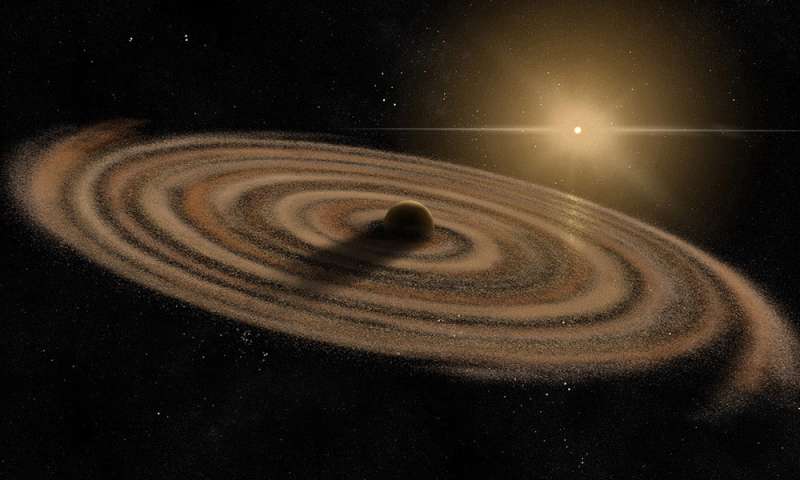Proposed set of conservation laws find order in the chaos of turbulence

Turbulence can be found in places large and small, from exploding supernovae and sprawling ocean currents, to the unstable plasmas that form within tiny fusion fuel cells bombarded with lasers.
And yet, as seemingly chaotic turbulence unfolds in a cascade of smaller swirls and eddies–and then even smaller swirls and eddies within those swirls and eddies–something unexpected happens, University of Rochester researchers say.
Those smaller swirls and eddies start to behave remarkably alike.
"As this process unfolds, creating these smaller and smaller structures, it loses memory of the first thing that triggered the flow into a turbulent state," says Hussein Aluie, assistant professor of mechanical engineering and co-author of a paper published in Physical Review Letters. "This loss of memory makes those structures at the small scales behave in a universal fashion."
As a result, Aluie and lead author Xin Bian, a Ph.D. student in his lab, have described a new set of conservation laws—fundamental laws describing natural processes—that are unique to turbulent flows within magnetic fields.
This has led to a set of simplified equations that can be potentially applied in multiple areas of research, including:
- the evolution of stars and galaxies, and the accretion of matter in space;
- predicting space weather around Earth due to the solar wind; and
- magnetized liner inertial fusion (MagLIF), an experimental approach to achieving controlled fusion in a lab.
In the course of this study, Bian and Aluie used over 16,000 computing cores and about 6 million CPU hours on the supercomputer at the National Energy Research Scientific Computing Center (NERSC) at Lawrence Berkeley National Laboratory.
"The simulations are some of the biggest of their kind," Aluie says.
The researchers also devised a new analytical method to unravel how bodies of turbulence "communicate" with each other at different scales.
"You can use it theoretically, you can use it with numerical simulations, and apply it on observations from experiments or even from satellites," Aluie says. "It is very versatile."
Aluie's lab is already applying the method to study how eddies and swirls affect general circulation patterns in the ocean, and also how the interplay between wind and water affects the evolution of those eddies.
"We are applying this to quantify how much power from the wind is put into the ocean," Aluie says. "The tool we have developed is very good at disentangling chaotic and complex systems."
More information: Xin Bian et al. Decoupled Cascades of Kinetic and Magnetic Energy in Magnetohydrodynamic Turbulence, Physical Review Letters (2019). DOI: 10.1103/PhysRevLett.122.135101
Journal information: Physical Review Letters
Provided by University of Rochester




















